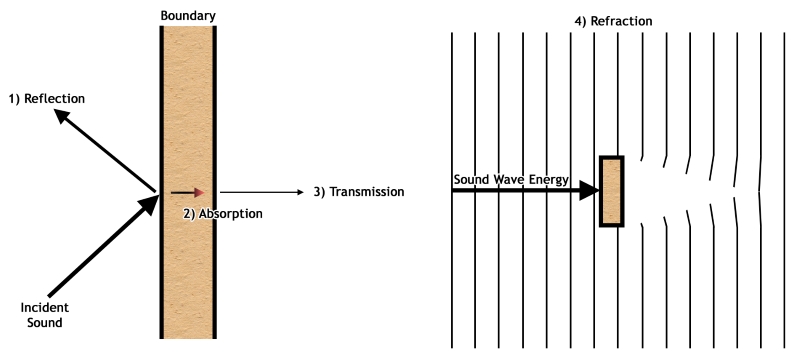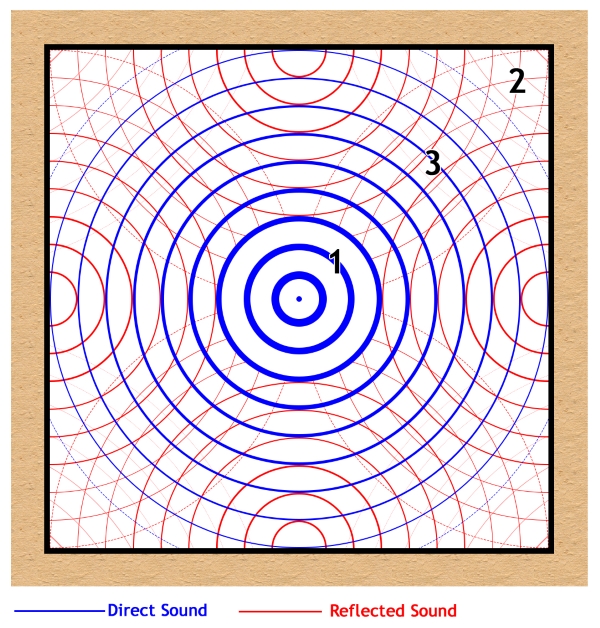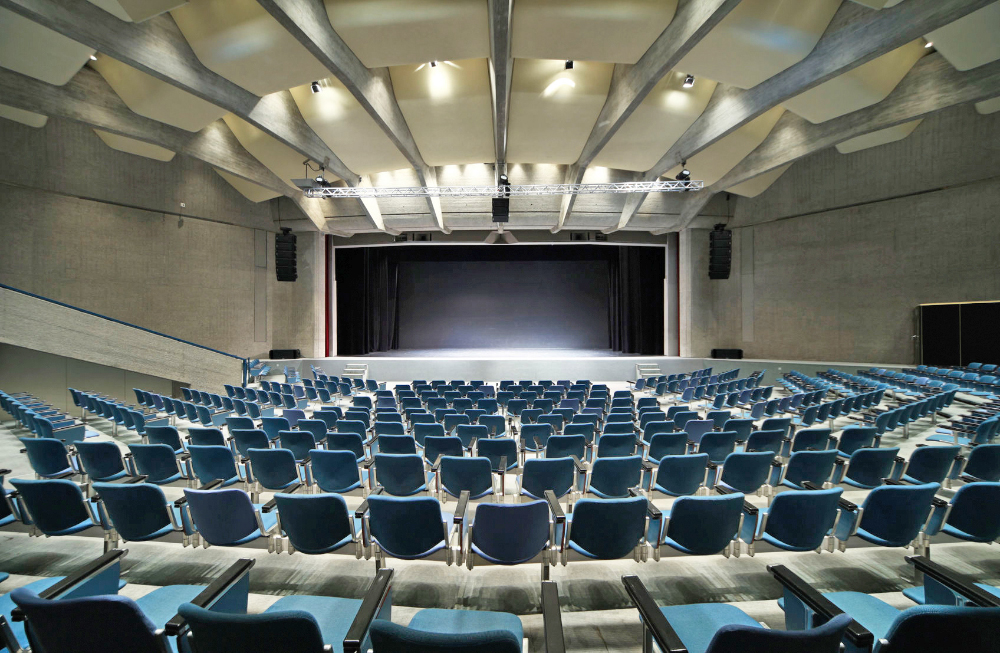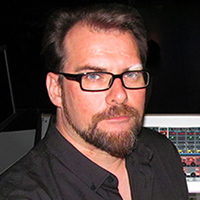In live sound, be it for speech- or music-based applications, we spend a lot of time considering what equipment to use and how it should be deployed to achieve the desired result of an intelligible and pleasing listening experience for the audience.
Many factors affect these decisions, but arguably the most important is the nature of the space in which we plan to operate, everything from the choice of microphones, the capabilities of the control surface, and the nature and positioning of the loudspeakers are heavily influenced by what happens when our carefully crafted sound is let loose in the wild.
Acoustics is the branch of physics concerned with the properties of sound, but we more commonly use it to describe the properties of a room or building that determine how sound is propagated.
When sound issues forth from a generator, be it an instrument or a loudspeaker, its behavior is initially very easy to predict – we know that it will decay over distance as the energy dissipates over an increasing area. However, once it starts to encounter physical objects, things get complicated very quickly. So let’s have a look at this behavior and break it down so we can better understand it.
Setting Boundaries

When sound energy encounters a boundary, be it a wall, floor or ceiling, various things will happen depending on the nature of the boundary and the stiffness of its surface (Figure 1).
The most common result is reflection but part of the energy can also be absorbed (and converted into heat) as well as transmitted though the boundary to continue its journey. If the object is relatively small the energy can also be refracted around it. The degree to which the sound energy is reflected, absorbed, transmitted or refracted is dependent on the frequency of the sound and the angle at which it strikes the boundary.
High-frequency sounds require less energy to generate their shorter wavelengths which means they’re more likely to be reflected or absorbed whereas low-frequency sounds, particularly those who’s wavelengths exceed the width of the boundary, are more likely to be transmitted. This kind of behavior is easily observed simply by standing outside a room where sound is being generated or amplified, you will always tend to hear more of the lower frequency content.
Transmitted sound can be a major problem for music venues as it represents a potential noise nuisance to neighbors, but this should hopefully be addressed in the design and construction (or adaptation) of the venue, or simply by keeping the amplitude below an acceptable value. The bigger issue for the mix engineer is the sound reflected inside and the reverberation that ensues.

If we look at the behavior of a theoretical point source of sound (i.e., where sound energy propagates equally in all directions) in a perfectly square room, we can see a symmetrical pattern of direct and reflected sound energy developing over time. If the source continues to generate sound the system quickly reaches a state of equilibrium where the sound energy being produced equals the energy being dissipated, thus filling the space with a sustained field of sound energy.
In Figure 2, if we stand at point 1, we will hear the direct sound from the source at a high level but none of the reflected sound from the room.
Alternatively, at point 2 all we will hear is the reflected sound and none of the direct sound. In between those two extremes is point 3, which is where the level of the direct sound equals the level of the reflected sound – this is called the critical distance. If we move beyond the critical distance the reflected sound quickly overtakes the direct sound, making it increasingly less intelligible.
Therefore, in order to provide a valid listening experience for the audience, it’s important to ensure they’re within the critical distance.
If we turn off the source, the sound will continue to bounce around losing energy until it dissipates and stops completely. This is what we perceive as reverberation. If we were to measure the time it takes to drop by 60 dB (a level chosen as a benchmark of inaudibility), we would arrive at a figure which defines the reverb time of the room (sometimes called RT60). A small room typically has a reverb time below 1 second, a concert hall is more likely in excess of 2 seconds, and a church can easily be far beyond 6 seconds.
To make things even more complicated, different materials reflect sound to different degrees. The amount of sound energy absorbed by a given surface is called the absorption coefficient which specifies a number between 0 (the perfect reflector) and 1 (the perfect absorber, often defined as an open window).
The absorption coefficient was developed by Dr. Wallace Sabine (the father of architectural acoustics), who spent many a late night moving furnishings and materials between his lecture hall and a nearby concert hall in order to measure their effect on the reverberation decay and thus produce a table of values for many common building materials and furnishings.
We use these tables to calculate the reverb time of a given room by measuring the surface area of each different material; however, it’s important to note that the absorption coefficient differs at different frequencies so the reverb time is likely to change depending on the frequency of the sound.
Making Waves
While reverberation can clearly be problematic, it’s not automatically a bad thing. A small to moderate amount is pleasing to the ear and can help to make things sound “musical.”
A good mix engineer can use the reverberation of the room to help glue the mix together – something which can be replicated using artificial reverb when taking a mix outdoors. However, excessive reverberation can quickly make speech unintelligible and ruin the subtle textures and dynamics of music.
If we look at the history of musical composition and performance prior to the harnessing of electricity, it’s interesting to note that music was often written to be performed in spaces with specific acoustics. Church music is an obvious example; everything from Gregorian chants to the organ music of Bach was designed to take advantage of the long reverb times commonly found in churches.
While symphony halls typically have shorter reverb times than churches, they’re still larger than most common spaces and thus lend themselves to grand sweeping arrangements. Chamber music, as the name implies, was designed to be played in the small furnished rooms of patrons and their guests and thus is typically more sprightly with faster moving passages.
There’s even a concert hall in Germany called the Bayreuth Festival Theatre that was designed specifically for the performance of the stage works of Richard Wagner – no other composers’ works has ever been performed there since it opened in 1876. The main hall is mostly wood and has a reverb time of 1.55 seconds, the orchestra pit is large, extends far under the stage and features a unique hooded design which acts as a filter that attenuates the higher frequencies of the orchestra and enables the vocals to come through. The result is a huge, warm and rich sound that compliments the music of Wagner.
By contrast, many of the venues employed for the performance of modern music were never designed for amplified music and thus can present unique challenges. Over the years I’ve worked in venues that were once theatres, cinemas, slaughterhouses, munitions factories and railway turning sheds – all places where the original acoustic demands were quite different (or not even considered).
In any challenging environment the key to the best possible sound is to minimize the unwanted reflections by careful positioning and aiming of the loudspeakers, which can greatly help in increasing the critical distance of any given room. If problems still exist, then reducing the overall level of the sound system can help claw back a modicum of intelligibility.
Plus & Minus
But reverberation is not the only problematic consequence of boundary reflections, whenever we have parallel boundaries we also have the specter of standing waves to deal with. Standing waves exists when the distance between parallel boundaries (or a multiple thereof) equals the wavelength of a specific frequency, which causes the wave to be reflected back on top of itself.

This is shown in Figure 3, where we see a 150 Hz sine wave being fed into a room with walls that are 30 feet apart – this just so happens to be 4 times the wavelength of 150 Hz (i.e., 7.5 feet). The result is a stationary wave that consists of zones of low pressure called nodes alternating with zones of high pressure called antinodes.
If you were in that room and moved into a node, you’d notice the level of the sound decrease dramatically, whereas if you moved into an antinode, it would increase dramatically (the distance between the nodes and antinodes being half the wavelength; i.e., 3.75 feet). Because this is a purely mathematical relationship, we also know that this space would create standing waves at multiples of the base frequency (300 Hz, 600 Hz, 1.2 kHz, 2.4 kHz, etc.) Such standing waves are also known as room resonances or room modes.
If an amplified microphone with broadband content moves into the antinode of a standing wave, it will dramatically amplify that specific frequency and thus increase the risk of feedback. Thankfully this risk can be addressed with the deployment of equalizer filters across the outputs to enable tuning of the frequency response of the system, thus minimizing the impact of the room modes and helping to prevent the formation of standing waves.
The study of the science of acoustics can quickly draw one into a world of complex calculations and mind-blowing mathematics, but a solid understanding of the acoustics of indoor spaces can gradually be built up simply by observing as many different spaces as possible. If you get to enjoy being involved in some great music along the way, then that’s just a bonus.















